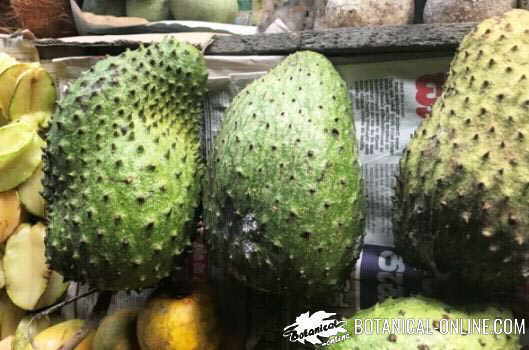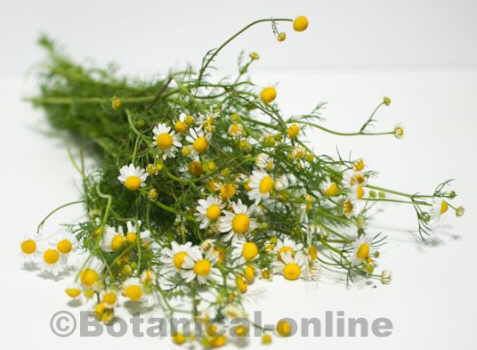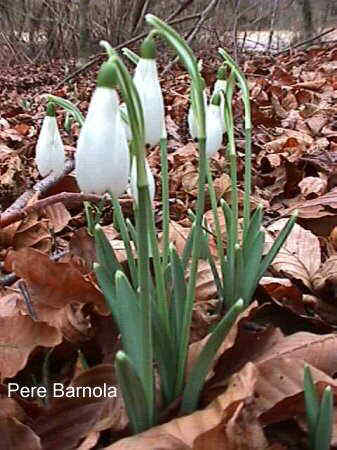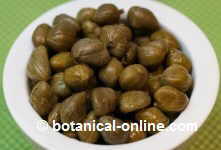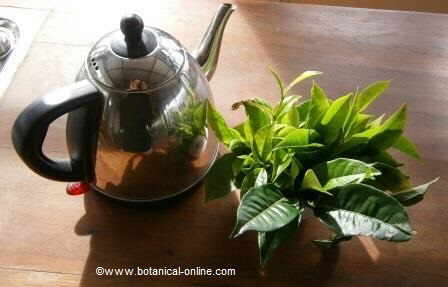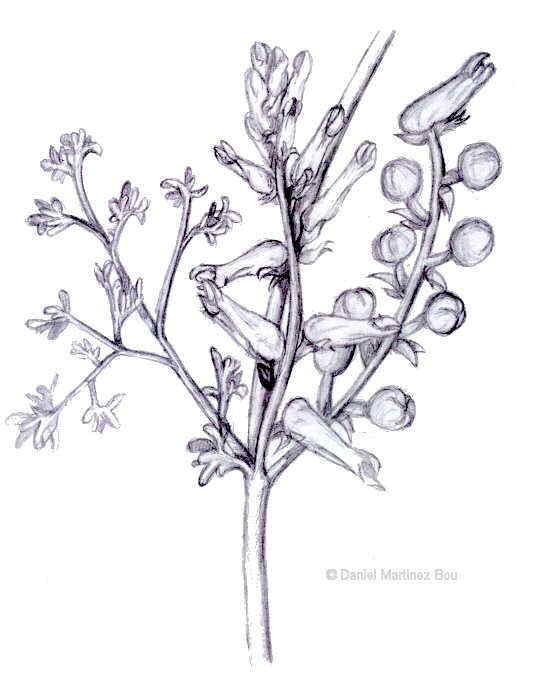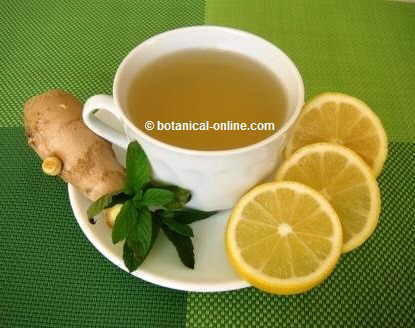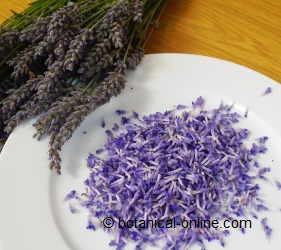Contents
What is an eucalyptus tree?
Characteristics of eucalyptus (Eucalyptus globulus)
Common name: Eucalyptus.
Scientific name: Eucalyptus globulus Labill.
Family: Myrtaceae
Where to find eucalyptus trees?
Habitat: Eucalyptus is a plant native of Australia and Tasmania, where you can find over 300 species of Eucalyptus.
Due to its growth speed, it can be found cultivated in many regions of the world for its wood, for paper pulp, and essential oil collection.
It is widely used as a garden tree. (See eucalyptus cultivation)
Uses of eucalyptus
It has been especially used to clean up wetlands to remove moisture from them with the consequent elimination of insect pests, especially mosquitoes, and the diseases they transmit.
Its use has been a great aid for malaria control in many areas in Asia, South America and southern Europe.
On the other hand, this capacity to absorb water, makes eucalyptus a species very aggressive to the environment by transforming ecosystems by drying the soil where they are planted.
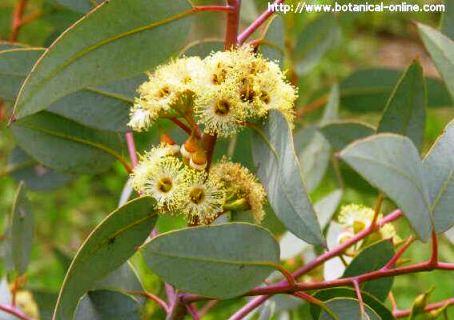 Eucalyptus flowers and leaves
Eucalyptus flowers and leaves
Eucalyptus botanical description
Perennial tree of the myrtle family of 40 to 65 m in height. Erect stems with bark of bluish gray.
Adult leaves alternate, lanceolate, up to 30 cm long, petiolate, with very strong midrib, dark green, shiny, hardened texture. Young leaves petiolated, not embracing the stem, gray-green and opposite.
Flowers: solitary or 3 together in umbels with numerous very prominent stamens and no petals. Woody fruit capsule up to 2.5 cm in length, with up to 4 cells that contain a large number of seeds.
Main components of eucalyptus
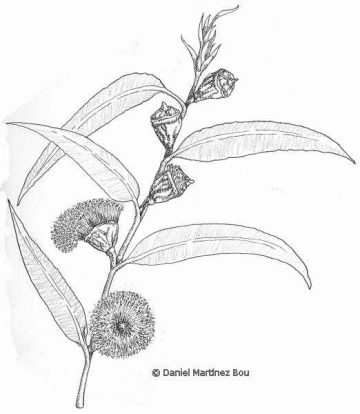
Botanical illustration of eucalyptus. Thanks to: www.dibujosparapintar.com
- Eucalyptus essential oil (13.5%): cineol or eucalyptol (7085%), alphapinene, dlimonene, pcymene, alphaphellandrene, camphene, gammaterpineol. Sesquiterpenes: aromadendreno, globulol, ledol, viridiflorol.
- Acids: chlorogenic, ellagic (bark) caffeic, ellagic, ferulic, gallic, gentisic (leaves).
- Flavonoids: eucaliptina, hyperoside, quercetin, quercitrin, rutin.
- Tannins
![]() More information on eucalyptus
More information on eucalyptus

